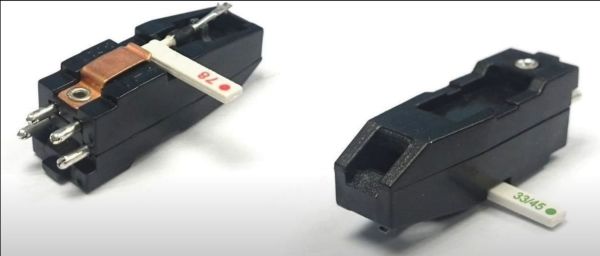What is the difference between 78, 45, and 33 RPM records? Obviously most people would say the speed, which of course is true to a degree. But as [Techmoan] covers in a recent video, there’s a whole lot more to the playback of 78 RPM records. Especially the older type without so-called ‘microgrooves’. Even if you have a record player that can do 78 RPM speeds, you may have noticed that the sound is poor, with a lot of clicking and popping.
The primary reason for this is that on an average 78 RPM record, the groove containing the sound pattern is 3 mil (thousandth of an inch) wide, whereas the grooves on microgroove and 33/45 RPM records is a mere 1 mil wide. This difference translates into the stylus tip, which is comically undersized for the 3 mil grooves and ends up dragging somewhere in the very bottom of the groove, missing entirely out on the patterns etched higher up on the sides. This is why in the past styluses would often come in the flip-style version, as pictured above.
It’s also possible to purchase the mono, 3 mil styluses today from Audio-Technica and other well-known brands, requiring only to switch the stylus cartridge between playing sessions with different groove sizes. As [Techmoan] demonstrates in the video, the difference between a too small and just right stylus is night and day, but it reveals the second issue with playing records: equalization.
Virtually all records have some kind of equalization applied to the recorded audio, to balance out the imperfections of the recording medium. Upon playback, this effect is inverted, restoring the original signal as much as possible. Since 1954, the de facto standard has been RIAA equalization, and this is what the average record preamplifier also assumes you are using. Unfortunately, this means that for many records from around that time and before, the wrong equalization will be applied, as basically every publisher had their own standard.
In the video, [Techmoan] figures out a way to get an affordable way to playback these wide groove, 78 RPM records, and to dodge the RIAA equalization step by tapping directly into the signal from the cartridge. This would likely be a lot easier if one threw more money at the whole thing, but where is the fun in that?
Continue reading “Playing 78 RPM Shellac Records: It’s Not Just About Speed”











